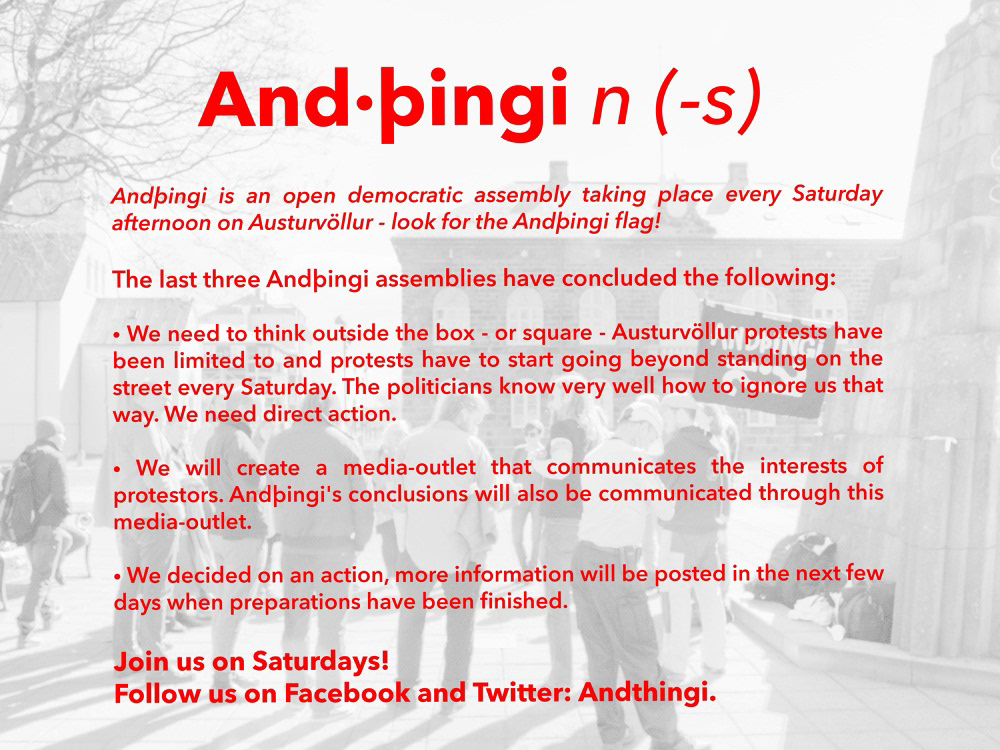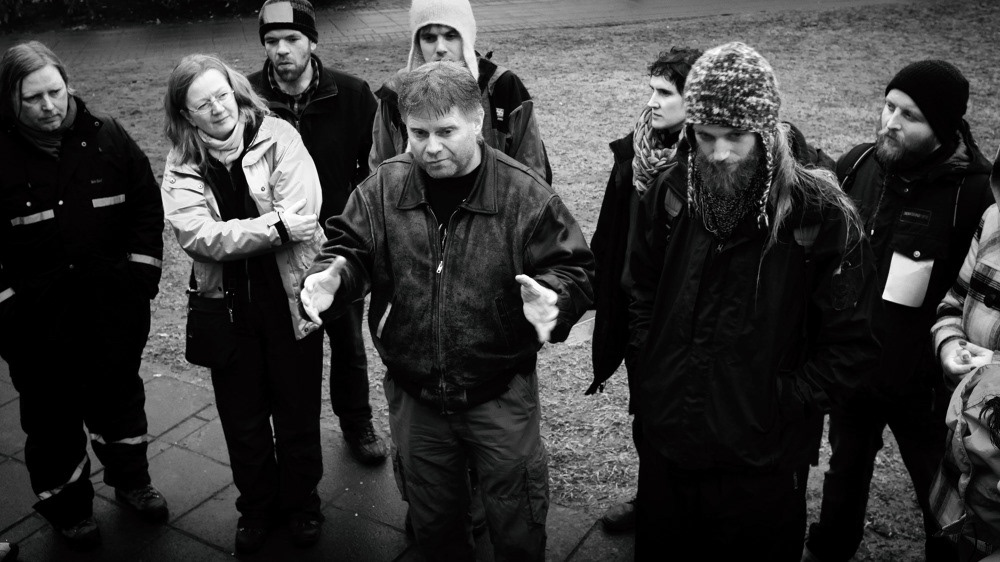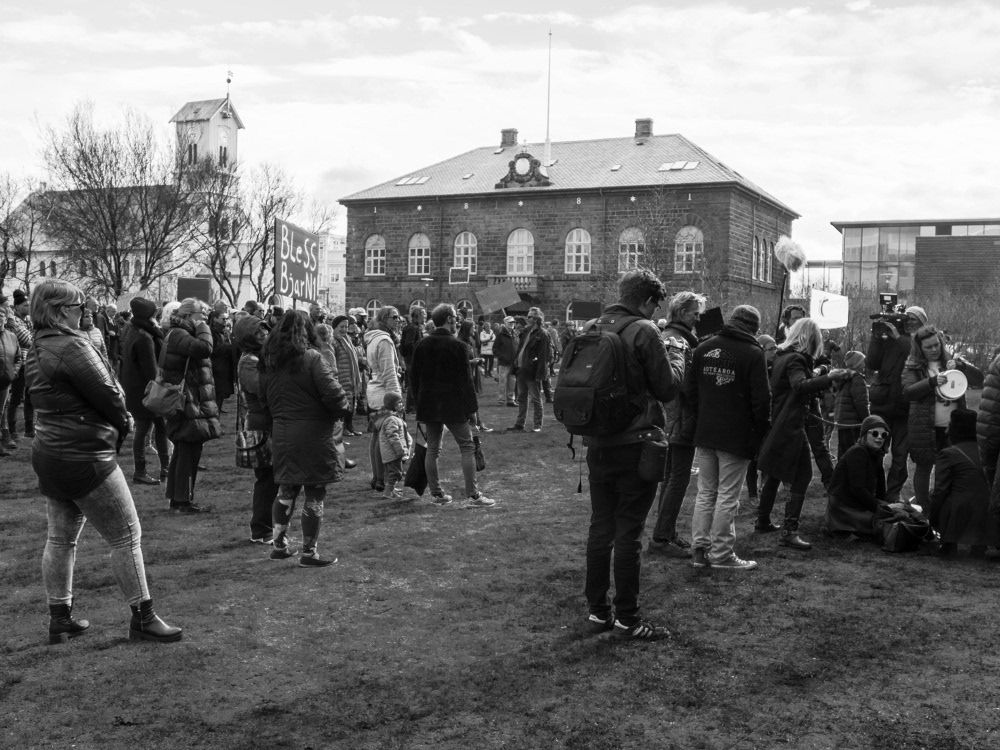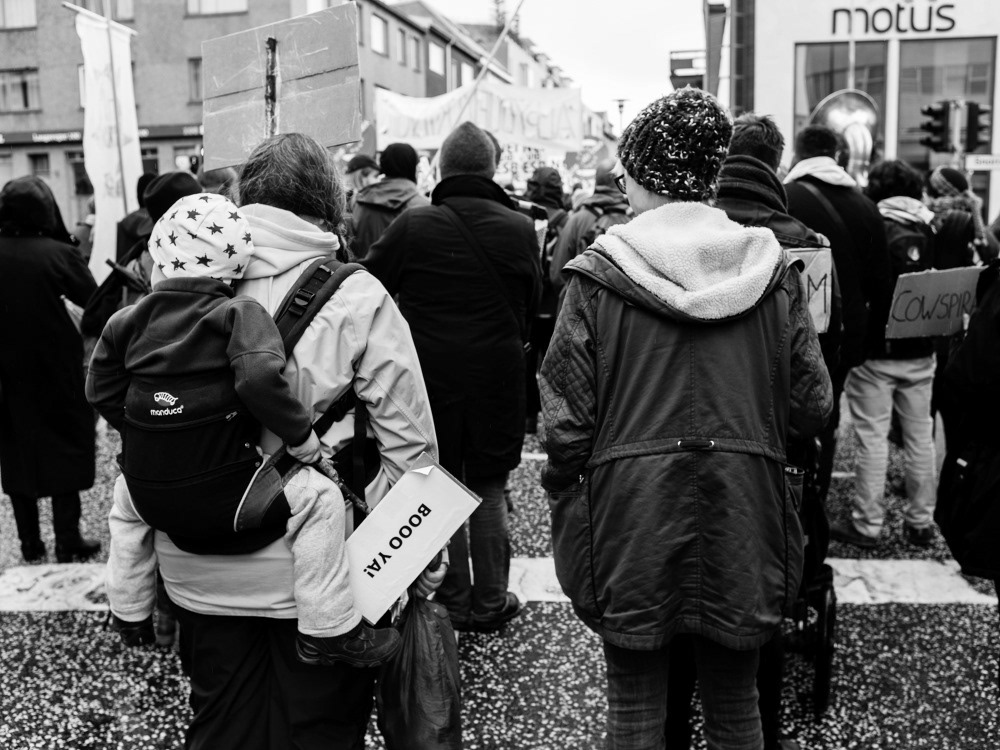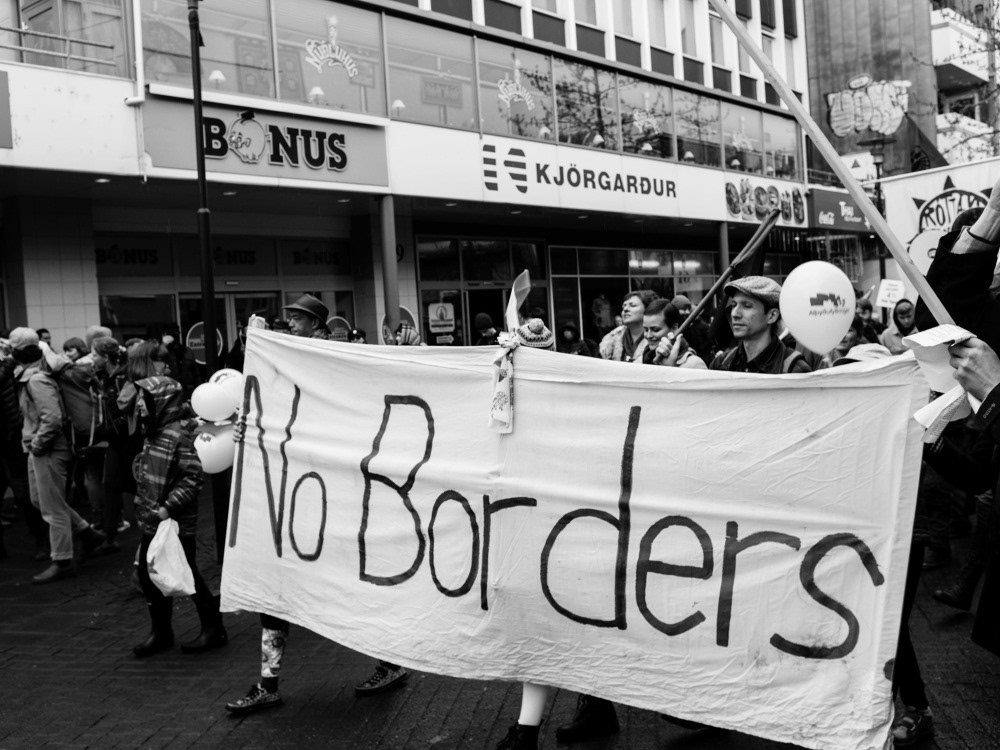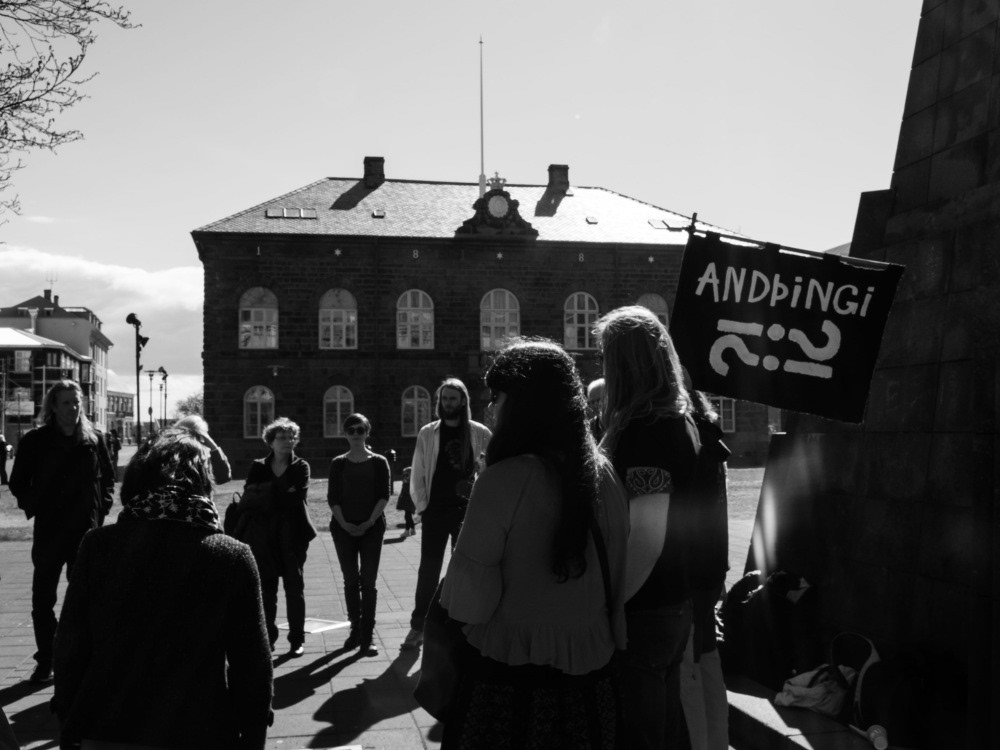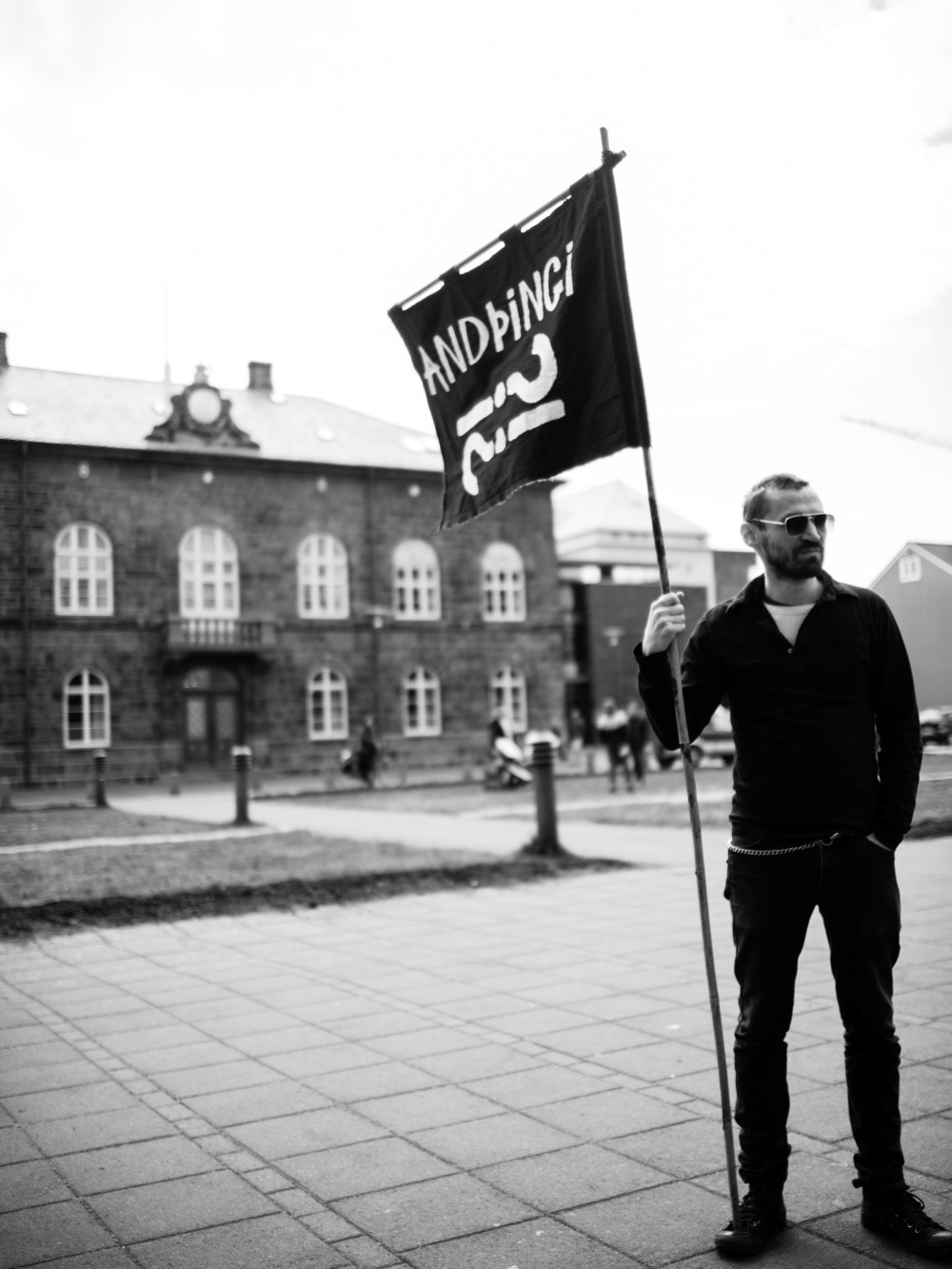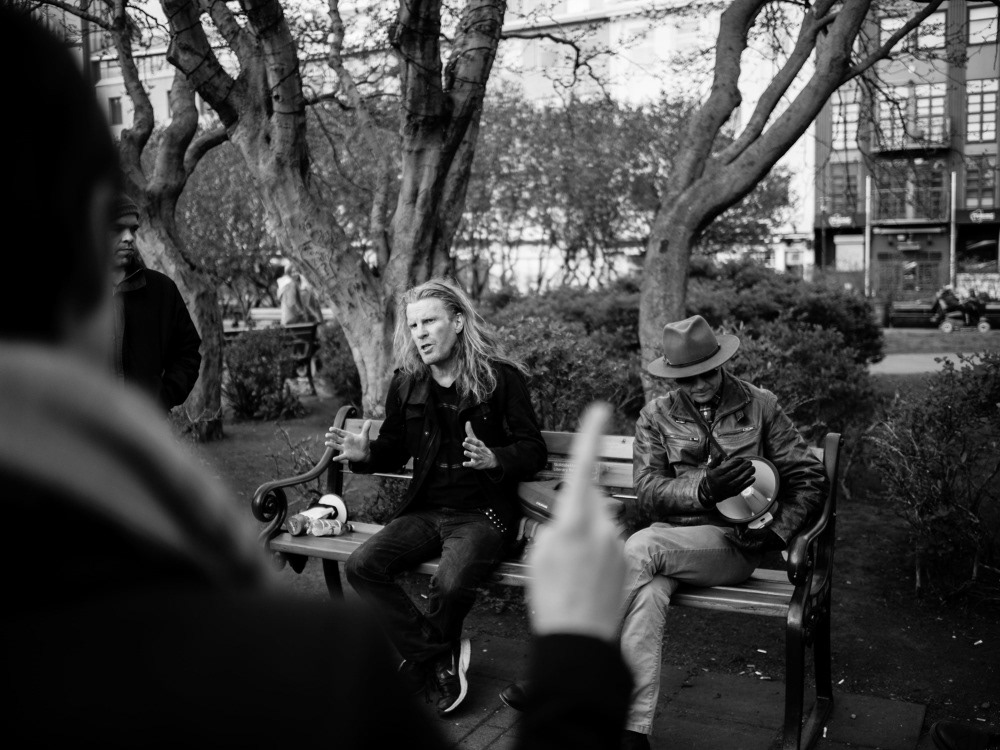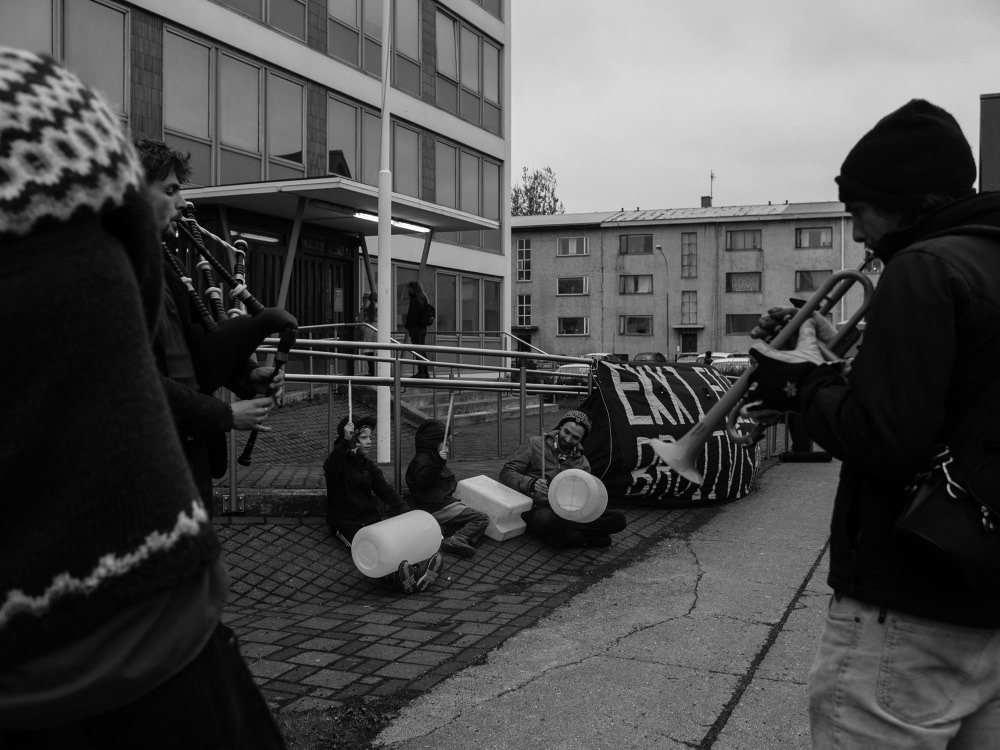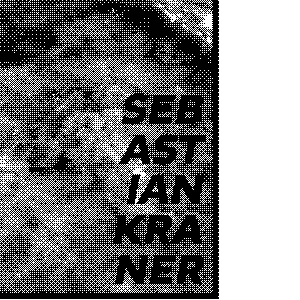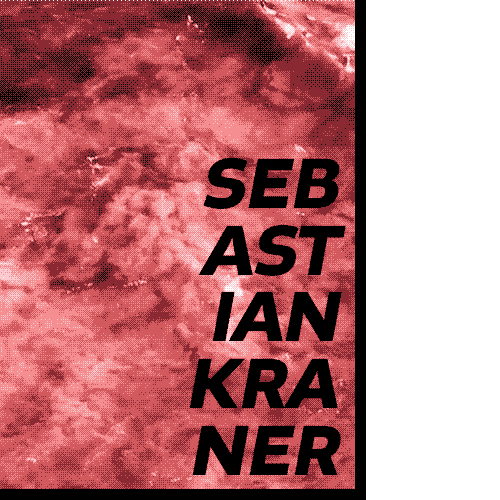camera & edit _ Sebastian Kraner
aerials _ Romain Alexandre
choir _ Linus, Hannah, Jamie
action _ Andþingi / No Borders Iceland / Beinar aðgerðir / Jæja / Eze Okafor
aerials _ Romain Alexandre
choir _ Linus, Hannah, Jamie
action _ Andþingi / No Borders Iceland / Beinar aðgerðir / Jæja / Eze Okafor
THE AURA OF REVOLUTION ?
The Aura of Revolution, a Social Design project by Jana Alaraj, La Schandré Coetzee & Sebastian Kraner aims to connect with and investigate different forms of protest and change-making. Through artistic methods and low threshold tools the project plants seeds of solidarity and connects like-minded thinkers towards a state of being active for positive social change.
Through interaction with the public and building connections with change makers mainly in Iceland and Vienna but also worldwide, the project has attempted to investigate what it takes for a populace to get active and how solidarity can be fostered in a world that seems polarized and unjust.
What is the future of changemaking?
THIS IS NOT MY ICELAND / THIS IS MY ICELAND
It is only an Island in the north Atlantic with around 333.000 inhabitants, isolated in the middle of the two western mainlands. So… on a global scale it doesn’t seem very relevant what is going on there, right? The last 5 months I have spent there and I have been working closely with political activists. With one of them, a Scottish expat, I talked about exactly this question. He said something, that is a very common feeling with people living in or moving to Iceland: Things seem doable here.
But what exactly is creating this diffuse confidence? What does it have to do with Iceland?
This text should be an attempt to make you see aspects of Icelandic society apart from the image we all have in our heads. I will try to highlight the particularities of political activism in this country. The fluffy-Iceland images in our heads are a good starting point though:
A camera flying over stormy snow-clad mountain ranges, valleys filled with violet blooming lupins, steep ocean cliffs and roaring waterfalls. Endless nature and solitude - and in between these vast landscapes cute little houses with goodhearted and welcoming people. Approximately everything that media shows of Iceland (at least outside the country) to some point promotes these clichés. If you are an international news reader , you might have heard of the „Kitchenware Revolution“ in 2008 when - that’s the common narrative - Icelanders successfully defeated the austerity measures of the IWF in the aftermath of the financial crisis that burst the immense speculation bubble created by Icelandic bankers and politicians. Or you might have heard of the recent protests in 2016, the largest in Icelandic history, when the publication of the Panama Papers revealed a scandalous involvement of Iceland's prime minister and members of the government in offshore tax havens. A few days later, the protests led to the resignation of the PM in question.
All of this feeds into the cliché narrative: In Iceland it is not only incredibly beautiful, but also, if shit happens, everything is quickly remade and fine again. Let’s not talk about it, let’s just enjoy it. The small population and the isolation of Iceland also feed into this image of the sweet underdog, doing its own thing. This cliché-image is not only something coming from abroad, I feel like many Icelanders like to present themselves this way too. But this is not the whole story, of course.
Even though the sky is illuminated 24h for a few days in summer, in exchange the sun also happens to disappear for a few days in winter almost completely. And that is what I was interested in - what is there, in the shadows? What is the real story behind all the fairy tales about this perfectly cute nation?
I have visited Iceland a few times over the past years - mostly in the role of the tourist. Especially the first time there, I was blown away by the beauty of this land. It really is incredible to find yourself in these film-set-like landscapes. Immediately after landing you get embedded in a very clever touristic narrative. I am not at all comfortable feeling like a tourist and Iceland really never made me feel like one. You are sold the image of being an individual explorer, invited to discover your way - but always more than welcome to lean back in a comfortable and welcoming touristic structure. After my third visit in 2014 I already knew a few people in Reykjavik and started to get glimpses of what life for a local is. At that time my interest in the crisis-years started and the idea of living in Reykjavik for a while grew bigger. In 2016 the time was ripe and I moved to Iceland to study at the Art Academy for half a year. My interest in living in Iceland also harmonized with my plans for the project „The Aura of Revolution“ that I had just started to work on a month before with my Social Design team. It was yet unclear what exactly I wanted to do, but what I knew was, that I want to get involved within political activism in Iceland.
To get an idea of how Iceland became what it is now, I began to read into the political history of the country. Settled between 700 and 800 the country was first ruled under the Commonwealth in one of the first parliament-like structures worldwide. A few hundred years later internal struggles weakened the community and Iceland was put under the Norwegian crown, which later became Denmark-Norway. In the middle ages Icelanders suffered not only from natural disasters and diseases, but the Danish crowns politics were far from Iceland-beneficial. All these factors led to a decreasing population. The beginning of the 19th century showed mass emigration of Icelanders - mainly to America. In the late 19th century a romantic and patriotic movement started to fight for Independence - which was granted by Denmark in 1918. Iceland became a Kingdom but never established a military - and so Denmark still took care of foreign policies for Iceland. This proved to be a problem in WWII: To prevent german forces from occupying Iceland, the British army invaded Iceland, violating it’s neutrality. In 1941 the US took over and from then on had an immense impact on what Iceland is today. In 1944 Icelanders voted to be an independent republic and the first president soon decided to join the NATO. In the archive of the state TV station I discovered material showing the protests against this decision in front of the parliament -a protest that went on for decades: After this decision the US kept their base on Icelandic soil and the Icelandic authorities became their partners. As some Icelanders like to say, this „American occupation“ lasted until 2006. The establishment of the NATO influenced the infrastructure and politics in Iceland massively. It helped to push Iceland’s baby economy slowly into the direction of growth. Not only did export increase, but the huge geothermal and hydro-power resources made the establishment of energy-consuming productions, mainly Aluminum-melters, possible.
An economic elite formed in the universities of the 70s and 80s. Most of them made it into important political and juridical positions. Invited by this new generation of neoliberal politicians, international companies built their factories all over Iceland, exploiting the natural resources. David Oddsson operated as the chief of the clan. He became an important politician and Iceland's prime minister from 1991-2004. His role models were Thatcher‘s Britain, Reagan‘s America or Lange‘s New Zealand. He wanted to make Iceland big.
By selling out the natural resources to international companies, privatizing banks & institutions and deregulating the financial sector he made this promise true. Out of the blue the three Icelandic main banks entered the world‘s ranking of the biggest 300 in 2006. It was all achieved by the well known „crash“-concept of unrestrained speculations, happening all over the world at this time. Icelandic bankers were known as being especially relentless. The public perceived them as heroes, calling them „the Vikings“. Loan rates dropped, banks outplayed each other with new ridiculous offers. Loan culture became normalized among the public : Houses, scholarships, big cars and even holidays. It seemed to be never ending growth. It wasn’t though.
In 2008, Geir H. Haarde, the prime minister following the legislative period of David Oddson and kind of his best friend, announced on TV that everything has gone down the river, the banks were suddenly bankrupt and Iceland was in massive overnight-debt. He finished his speech with the dramatic words: „God bless Iceland“. The capitalistic dreamland suddenly was over. The loans exploded, many personal debts became unpayable. A huge number of Icelanders lost their jobs, their homes and suddenly were faced with substantial problems.
It was not about life anymore - it was about survival.
The anger about the bankers and politics as well as the growing social injustice led to the formation of the „Kitchenware-Revolution“- the first „violent“ protests in more than 50 years took place. After months of protest the government stepped down and a new leftish government (Social Democrats and Left Green Party) took its place. New laws were introduced, the financial sector was regulated again, some of the responsible bankers taken to court and programs to help people with debts were introduced. At the same time the new government took austerity measures which quickly led to decreasing approval in society. In 2013 the Icelanders voted the very same conservative parties back into office, that initially induced the crisis.
Why would someone do this?
One of the reasons for the voting behavior in 2013 might be found in the MA-thesis of Social Anthropologist Katarina Landström. She was interested in why Icelanders instead of refusing to pay back the loans and keeping up the protests, chose to go another path: A life of cut backs in their lifestyle and acceptance of life-long debts. In numerous of Landströms interviews, many share the feeling of having lived a life over their proportions before the crisis. That they were stupid and it was their own fault signing the loan contracts. Landström works out that the public perception of the crisis had turned and people had stopped blaming bankers or the government, they just blame themselves for what happened on an individual level. Landström also reports of protests for a new constitution that happened in the post-crisis-years and was surprised to notice how powerless they were. In her eyes, people just stood around, having coffee and chatter, shouting a few paroles and then leaving again. She described it as „Spectacles, in which everyone knows their role and plays it well.“
Even though many Icelanders are still in lifelong debt, the general mood I perceived during my stay was quite optimistic - at least within the university surroundings I spent most of my time in the beginning in. Of course also these groups talked about problems - the ones mentioned the most are the incredibly high rent and cost of living. Tourism exploded in the post-crisis years, and the whole inner city of Reykjavik is like a hotel. No matter where you are downtown, it is full of tourists. Old houses are torn down to build hotels. The inner city apartments became unaffordable and many are turned into AirBnbs. People have to move to the cheaper outskirts. Many I talked to, say that tourism saves Iceland. But at the same time the touristic gentrification creates these new problems.
With the months passing, I started to get to know more layers in this society. I began to perceive poverty by observing closely, because it is very hidden in this country. It happened on a daily basis, that people in the supermarkets could not pay for their food. But instead of a stir in the cash line, most of the time the next person in line just took it for the person in question. It happened quiet and casually. Later I have been told that this kind of solidarity grew in the after-crisis years and lasts until today as an unspoken law.
The next step up in awareness manifested in two events: The first one was the publication of the Panama Papers and the already mentioned biggest protest in Icelandic history, a demonstration of families and singles, old and young. It was loud and it was aggressive - Bananas, toilet paper and Skyr (Icelandic kind-of-yoghurt) thrown at the parliament house. Out of literally nothing.
Just a few days later I got to know some of the people of the activist group I was going to work with until the end of my stay. The interesting thing about these people is, that calling them an „activist group“ somehow completely creates the wrong image of how they work. From the beginning on it felt more like a circle of friends rather than a political interest group. There is a core of maybe four people and some additional 10-20 people joining in different actions. The group also got surprised by the huge protest and were sitting together in a downtown-house living room, thinking of ways to take the protest further. The idea of creating a post-demonstration-plenum, discussing new tactics and start working with ordinary people came up. This plenum was given the name „Andthingi“ which translates as „Antiparliament“ but also as „New spirit Parliament“.
I offered my services as filmmaker, helped with creating the movement’s logo and set up the social media channels. So from now on, after the regular Saturday-Protests, Andthingi-meetings were held. I helped creating a short video clip to promote the meetings. After a few meetings, a group of 15-30 people were established and started to develop ideas for direct action to put pressure on the government to step back: After a protest-grillparty in the backyard of government politician Bjarni Benediktsson (The kind of person that tweets Thatcher-quotes on the 1st of May: „The problem with socialism is, that you eventually run out of other people’s money.“) the group decided for another action at a gala dinner of the whole parliament. A protest band playing in front of the hotel, where the dinner took place, and people dancing around the politicians walking the red carpet, confronting them with their Panama involvements via Megaphone. It created a very chaotic atmosphere and apart from the politicians being quite irritated, the video I made of the action spread in the internet and the action had a quite positive media echo.
It is only an Island in the north Atlantic with around 333.000 inhabitants, isolated in the middle of the two western mainlands. So… on a global scale it doesn’t seem very relevant what is going on there, right? The last 5 months I have spent there and I have been working closely with political activists. With one of them, a Scottish expat, I talked about exactly this question. He said something, that is a very common feeling with people living in or moving to Iceland: Things seem doable here.
But what exactly is creating this diffuse confidence? What does it have to do with Iceland?
This text should be an attempt to make you see aspects of Icelandic society apart from the image we all have in our heads. I will try to highlight the particularities of political activism in this country. The fluffy-Iceland images in our heads are a good starting point though:
A camera flying over stormy snow-clad mountain ranges, valleys filled with violet blooming lupins, steep ocean cliffs and roaring waterfalls. Endless nature and solitude - and in between these vast landscapes cute little houses with goodhearted and welcoming people. Approximately everything that media shows of Iceland (at least outside the country) to some point promotes these clichés. If you are an international news reader , you might have heard of the „Kitchenware Revolution“ in 2008 when - that’s the common narrative - Icelanders successfully defeated the austerity measures of the IWF in the aftermath of the financial crisis that burst the immense speculation bubble created by Icelandic bankers and politicians. Or you might have heard of the recent protests in 2016, the largest in Icelandic history, when the publication of the Panama Papers revealed a scandalous involvement of Iceland's prime minister and members of the government in offshore tax havens. A few days later, the protests led to the resignation of the PM in question.
All of this feeds into the cliché narrative: In Iceland it is not only incredibly beautiful, but also, if shit happens, everything is quickly remade and fine again. Let’s not talk about it, let’s just enjoy it. The small population and the isolation of Iceland also feed into this image of the sweet underdog, doing its own thing. This cliché-image is not only something coming from abroad, I feel like many Icelanders like to present themselves this way too. But this is not the whole story, of course.
Even though the sky is illuminated 24h for a few days in summer, in exchange the sun also happens to disappear for a few days in winter almost completely. And that is what I was interested in - what is there, in the shadows? What is the real story behind all the fairy tales about this perfectly cute nation?
I have visited Iceland a few times over the past years - mostly in the role of the tourist. Especially the first time there, I was blown away by the beauty of this land. It really is incredible to find yourself in these film-set-like landscapes. Immediately after landing you get embedded in a very clever touristic narrative. I am not at all comfortable feeling like a tourist and Iceland really never made me feel like one. You are sold the image of being an individual explorer, invited to discover your way - but always more than welcome to lean back in a comfortable and welcoming touristic structure. After my third visit in 2014 I already knew a few people in Reykjavik and started to get glimpses of what life for a local is. At that time my interest in the crisis-years started and the idea of living in Reykjavik for a while grew bigger. In 2016 the time was ripe and I moved to Iceland to study at the Art Academy for half a year. My interest in living in Iceland also harmonized with my plans for the project „The Aura of Revolution“ that I had just started to work on a month before with my Social Design team. It was yet unclear what exactly I wanted to do, but what I knew was, that I want to get involved within political activism in Iceland.
To get an idea of how Iceland became what it is now, I began to read into the political history of the country. Settled between 700 and 800 the country was first ruled under the Commonwealth in one of the first parliament-like structures worldwide. A few hundred years later internal struggles weakened the community and Iceland was put under the Norwegian crown, which later became Denmark-Norway. In the middle ages Icelanders suffered not only from natural disasters and diseases, but the Danish crowns politics were far from Iceland-beneficial. All these factors led to a decreasing population. The beginning of the 19th century showed mass emigration of Icelanders - mainly to America. In the late 19th century a romantic and patriotic movement started to fight for Independence - which was granted by Denmark in 1918. Iceland became a Kingdom but never established a military - and so Denmark still took care of foreign policies for Iceland. This proved to be a problem in WWII: To prevent german forces from occupying Iceland, the British army invaded Iceland, violating it’s neutrality. In 1941 the US took over and from then on had an immense impact on what Iceland is today. In 1944 Icelanders voted to be an independent republic and the first president soon decided to join the NATO. In the archive of the state TV station I discovered material showing the protests against this decision in front of the parliament -a protest that went on for decades: After this decision the US kept their base on Icelandic soil and the Icelandic authorities became their partners. As some Icelanders like to say, this „American occupation“ lasted until 2006. The establishment of the NATO influenced the infrastructure and politics in Iceland massively. It helped to push Iceland’s baby economy slowly into the direction of growth. Not only did export increase, but the huge geothermal and hydro-power resources made the establishment of energy-consuming productions, mainly Aluminum-melters, possible.
An economic elite formed in the universities of the 70s and 80s. Most of them made it into important political and juridical positions. Invited by this new generation of neoliberal politicians, international companies built their factories all over Iceland, exploiting the natural resources. David Oddsson operated as the chief of the clan. He became an important politician and Iceland's prime minister from 1991-2004. His role models were Thatcher‘s Britain, Reagan‘s America or Lange‘s New Zealand. He wanted to make Iceland big.
By selling out the natural resources to international companies, privatizing banks & institutions and deregulating the financial sector he made this promise true. Out of the blue the three Icelandic main banks entered the world‘s ranking of the biggest 300 in 2006. It was all achieved by the well known „crash“-concept of unrestrained speculations, happening all over the world at this time. Icelandic bankers were known as being especially relentless. The public perceived them as heroes, calling them „the Vikings“. Loan rates dropped, banks outplayed each other with new ridiculous offers. Loan culture became normalized among the public : Houses, scholarships, big cars and even holidays. It seemed to be never ending growth. It wasn’t though.
In 2008, Geir H. Haarde, the prime minister following the legislative period of David Oddson and kind of his best friend, announced on TV that everything has gone down the river, the banks were suddenly bankrupt and Iceland was in massive overnight-debt. He finished his speech with the dramatic words: „God bless Iceland“. The capitalistic dreamland suddenly was over. The loans exploded, many personal debts became unpayable. A huge number of Icelanders lost their jobs, their homes and suddenly were faced with substantial problems.
It was not about life anymore - it was about survival.
The anger about the bankers and politics as well as the growing social injustice led to the formation of the „Kitchenware-Revolution“- the first „violent“ protests in more than 50 years took place. After months of protest the government stepped down and a new leftish government (Social Democrats and Left Green Party) took its place. New laws were introduced, the financial sector was regulated again, some of the responsible bankers taken to court and programs to help people with debts were introduced. At the same time the new government took austerity measures which quickly led to decreasing approval in society. In 2013 the Icelanders voted the very same conservative parties back into office, that initially induced the crisis.
Why would someone do this?
One of the reasons for the voting behavior in 2013 might be found in the MA-thesis of Social Anthropologist Katarina Landström. She was interested in why Icelanders instead of refusing to pay back the loans and keeping up the protests, chose to go another path: A life of cut backs in their lifestyle and acceptance of life-long debts. In numerous of Landströms interviews, many share the feeling of having lived a life over their proportions before the crisis. That they were stupid and it was their own fault signing the loan contracts. Landström works out that the public perception of the crisis had turned and people had stopped blaming bankers or the government, they just blame themselves for what happened on an individual level. Landström also reports of protests for a new constitution that happened in the post-crisis-years and was surprised to notice how powerless they were. In her eyes, people just stood around, having coffee and chatter, shouting a few paroles and then leaving again. She described it as „Spectacles, in which everyone knows their role and plays it well.“
Even though many Icelanders are still in lifelong debt, the general mood I perceived during my stay was quite optimistic - at least within the university surroundings I spent most of my time in the beginning in. Of course also these groups talked about problems - the ones mentioned the most are the incredibly high rent and cost of living. Tourism exploded in the post-crisis years, and the whole inner city of Reykjavik is like a hotel. No matter where you are downtown, it is full of tourists. Old houses are torn down to build hotels. The inner city apartments became unaffordable and many are turned into AirBnbs. People have to move to the cheaper outskirts. Many I talked to, say that tourism saves Iceland. But at the same time the touristic gentrification creates these new problems.
With the months passing, I started to get to know more layers in this society. I began to perceive poverty by observing closely, because it is very hidden in this country. It happened on a daily basis, that people in the supermarkets could not pay for their food. But instead of a stir in the cash line, most of the time the next person in line just took it for the person in question. It happened quiet and casually. Later I have been told that this kind of solidarity grew in the after-crisis years and lasts until today as an unspoken law.
The next step up in awareness manifested in two events: The first one was the publication of the Panama Papers and the already mentioned biggest protest in Icelandic history, a demonstration of families and singles, old and young. It was loud and it was aggressive - Bananas, toilet paper and Skyr (Icelandic kind-of-yoghurt) thrown at the parliament house. Out of literally nothing.
Just a few days later I got to know some of the people of the activist group I was going to work with until the end of my stay. The interesting thing about these people is, that calling them an „activist group“ somehow completely creates the wrong image of how they work. From the beginning on it felt more like a circle of friends rather than a political interest group. There is a core of maybe four people and some additional 10-20 people joining in different actions. The group also got surprised by the huge protest and were sitting together in a downtown-house living room, thinking of ways to take the protest further. The idea of creating a post-demonstration-plenum, discussing new tactics and start working with ordinary people came up. This plenum was given the name „Andthingi“ which translates as „Antiparliament“ but also as „New spirit Parliament“.
I offered my services as filmmaker, helped with creating the movement’s logo and set up the social media channels. So from now on, after the regular Saturday-Protests, Andthingi-meetings were held. I helped creating a short video clip to promote the meetings. After a few meetings, a group of 15-30 people were established and started to develop ideas for direct action to put pressure on the government to step back: After a protest-grillparty in the backyard of government politician Bjarni Benediktsson (The kind of person that tweets Thatcher-quotes on the 1st of May: „The problem with socialism is, that you eventually run out of other people’s money.“) the group decided for another action at a gala dinner of the whole parliament. A protest band playing in front of the hotel, where the dinner took place, and people dancing around the politicians walking the red carpet, confronting them with their Panama involvements via Megaphone. It created a very chaotic atmosphere and apart from the politicians being quite irritated, the video I made of the action spread in the internet and the action had a quite positive media echo.
The other „branch“ the group takes care of is Anti-Deportation work. Even though it has lots of space and not many asylum applications per year - does not deal any different with the agenda than many other European countries. The problem with disengaged refugees exists here too and most of them are kept isolated from the city center. The only thing that really is different is the scale: The number of deportation cases is small, that is why it is easier to keep the overview and organize protest. The mainstream media and the public opinion usually in favor of Antideportation-Action. Still it can go the wrong way, as it has been proven by Ezes case, just a few days before I left Iceland. I interviewed him a few days before all of this happened, and it was very hard for me to see so much disappointment and resignation in his face. The Nigerian, who is looked for by Boko Haram, fled via Sweden, where he got a negative decision, to Iceland looking for protection. He spent years waiting for the authorities to decide something. In the end a court ruled he had to get a new process in Iceland. Finally there was some hope for his case. Disregarding this ruling, the authorities arrested Eze the next day to deported him illegally. Two activists got on the same plane and tried to convince people to stop the deportation together - with no response but a very rough arrest by the police. Until today, Eze is in Sweden waiting for his final deportation to Nigeria. While the group in Iceland tries to bring him back, another group in Sweden tries to fight him through the legal way.
Eze’s deportation and the spectacular arrest of the two activists at the airport raised media and public attention. His case was even discussed in parliament and resistance against the ministry of interior is growing.
Of course this attention has a lot to do with the fact, that this country just is not that big. Deportations are not (yet) the daily business in Iceland, and even though scenes like these happen on a daily basis in the rest of the world, it is a bigger deal in a small society.
But there is another difference in the communication of these events: Media coverage does not classify the actions as „left wing-activism“, even though that’s what people would call it elsewhere. Even though there have of course been critical voices about some of the actions done by the group, the main public discussion was about the topics that the activists wanted to transmit by their actions. Without saying that this creates change more easily, it is a big step up, that the ideas are discussed and not labelled in advance. Another particularity in Iceland is, that right-wing extremism has not (yet) gained foothold in society. This of course means one front less to battle, and makes it much easier to work on the agenda. Members of the group are even invited into the parliament by opposition parties to discuss propositions concerning migration topics. Also the media tends to take their opinion rather than to ask officials (mostly because the activists know the law and the situation way better than the politicians). Their opinion might not play a big role in society, but it is given a chance to be heard. This „Basic Solidarity“ might be connected to the one I saw in the supermarkets, when people could not pay their groceries. Like when there is a snowstorm and people move closer together and help each other out, the crisis seemed to have a similar effect.
Even though society might not have chosen the most emancipatory path after the crisis, there is another kind of societal togetherness - at least in comparison to the central European countries I know. Like I mentioned in the beginning: Everything just seems to be a little bit more doable.
Eze’s deportation and the spectacular arrest of the two activists at the airport raised media and public attention. His case was even discussed in parliament and resistance against the ministry of interior is growing.
Of course this attention has a lot to do with the fact, that this country just is not that big. Deportations are not (yet) the daily business in Iceland, and even though scenes like these happen on a daily basis in the rest of the world, it is a bigger deal in a small society.
But there is another difference in the communication of these events: Media coverage does not classify the actions as „left wing-activism“, even though that’s what people would call it elsewhere. Even though there have of course been critical voices about some of the actions done by the group, the main public discussion was about the topics that the activists wanted to transmit by their actions. Without saying that this creates change more easily, it is a big step up, that the ideas are discussed and not labelled in advance. Another particularity in Iceland is, that right-wing extremism has not (yet) gained foothold in society. This of course means one front less to battle, and makes it much easier to work on the agenda. Members of the group are even invited into the parliament by opposition parties to discuss propositions concerning migration topics. Also the media tends to take their opinion rather than to ask officials (mostly because the activists know the law and the situation way better than the politicians). Their opinion might not play a big role in society, but it is given a chance to be heard. This „Basic Solidarity“ might be connected to the one I saw in the supermarkets, when people could not pay their groceries. Like when there is a snowstorm and people move closer together and help each other out, the crisis seemed to have a similar effect.
Even though society might not have chosen the most emancipatory path after the crisis, there is another kind of societal togetherness - at least in comparison to the central European countries I know. Like I mentioned in the beginning: Everything just seems to be a little bit more doable.
I don’t think there is anything to just copy and paste from how things go in Iceland. The particular situations in other countries are way too complex to simply answer with an „Icelandic Way“, if there even is one. But what I gained trust in again is, that a societal dialogue about progressive positions and even radical action can be possible - something that I had given up to believe in. It has become even more obvious for me, how urgent it is to cement the cracks going through our societies. Iceland is not only special because it is small and isolated, it is special because very specific events and circumstances created this environment. One day, it might be another crisis here that too helps us finding a way together, but it is quite risky to trust in such an event to bring this change. Of course we have to try to create direct solidarity by offering alternatives to politics of fear, showing visionary ways out of the inequality. But we are not losing our faces by working on low threshold levels: human to human-solidarity, that is not based in ideological discussion, but in small gestures out in the streets. We are living in a society of made-up minds and a violent communication climate. We have to open up these communication channels with creative action again.
